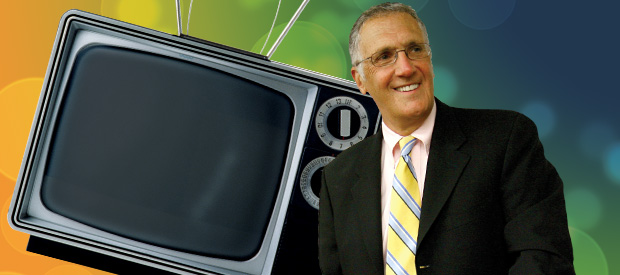15 Years of Fame
When football icon O. J. Simpson climbed into a white Ford Bronco on a Friday afternoon in June 1994, he probably had no idea that he was launching a subsidiary media industry.
When football icon O. J. Simpson climbed into a white Ford Bronco on a Friday afternoon in June 1994 (instead of showing up at a police station), he probably had no idea that he was launching a subsidiary media industry, one that would propel many into new careers and drag otherwise normal people into unsought celebrity.

On the following Sunday afternoon, Roger Cossack’s phone rang. He was then a Los Angeles criminal defense attorney and he was leaving to go to the movies. The legal editor of The New York Times needed an expert advisor on California criminal law for an article on the O. J. case. “I had no time for that,” Cossack recalls, but he said, “I’ll give you 15 minutes.” It turned out that Cossack was quoted extensively, and then the phone calls from media started. CNN engaged him as legal analyst, first for the O. J. preliminary hearings, and then for the trial itself. For the last 15 years the media phone calls have never stopped.
Cossack’s current media gig is serving as legal analyst for the ESPN sports network, called upon to shed light on the (mostly negative) interactions that America’s sports heroes have with the law. His easy-going, quip-ready delivery of concepts like the rules of evidence and trial protocols, have kept fickle audiences’ attention in an arena where complexity commands precious little.
Typical of the subjects of his ESPN commentaries is the recent misadventure of Plaxico Burress, an athlete who accidentally shot himself in public, in New York City, with an unregistered gun. Considering the larger story, Cossack observes: “Burress was a very good football player of great interest in New York. What people see is a reflection of their own lives in the troubles of the famous, which movie magazines have always done. The same thing can be said of Michael Jackson or Princess Diana, of whom the public knows much less than they think they do.”
Cossack’s legal chops extend well beyond the woes of sports figures. He cohosted the weekly CNN program Burden of Proof vetting the legal issues in the news. It was through that show that Cossack first became acquainted with Ken Starr, who at a reception approached Cossack and expressed appreciation of his professionalism in his commentary on Starr’s role as then special prosecutor. Cossack credits that lasting favorable impression (along with his friendship with UCLA Law classmate and School of Law professor Anthony McDermott) with an invitation to conduct his class “Media and the Law” at Pepperdine. “In that course we consider the First Amendment, particularly the freedoms of speech and of the press.” He notes that nowadays “the traditional media—TV, radio, print, movies—are marginalized, and the current interest is in the Internet, Twitter, Facebook, blogs, and other new media that we haven’t yet figured out.”
“For instance, in libel law protects citizens, but public figures less so, from damaging speech the Sullivan case has been well settled for over 50 years and draws the definition of a public figure very broadly as someone within a discussion of public interest. Simply entering a chat room probably won’t make you a public figure,” Cossack notes, but in a world where online discussions can fast become viral and worldwide, we all have the potential to become public figures in a matter of hours.
In another case, “you might choose to defend yourself in a libel against yourself to recover damages, like many celebrities have, in a jurisdiction like England, where there is no First Amendment protection. Also, consider the issue of privacy itself—young people today plaster their lives all over Facebook and have lived with cameras all around them. It may be that our ‘reasonable expectation of privacy’ has now shifted.”
Offering an ironic assessment of his broadcast work, Cossack says, “You can blame me for all the TV analysts today. And probably for reality TV too—the O. J. trial was really the first reality TV show and I was one of the first there.” But he notes that broadcast legal commentary has changed in that “it’s become personality driven. I’m not really that good at it,” he adds modestly, referring to the standard “screaming and rolling of the eyes” required of analysts today. “There’s not really that much analysis going on today, and I don’t mean that as a criticism. Producers are always in a conflict of providing content and something that’s interesting. I try to be both entertaining and educational; after all I am in show biz.”
Cossack considered his first stint as commentator on the O. J. hearings as his “Andy Warhol moment” of 15 minutes of fame, but his continued successes drew him into full-time broadcast precisely when he was looking to do something else beyond legal practice. “I realized early on I had grabbed ‘the tiger by the tail,’” but Cossack seized the opportunity and has found the ride exciting.
Asked to predict what the next “misguided athlete” story may be, “It’ll always be the same. The human foibles of the famous and talented, and their fall from grace.”
